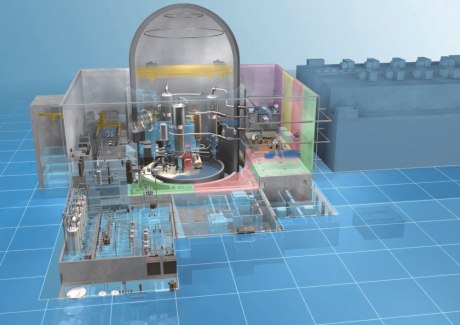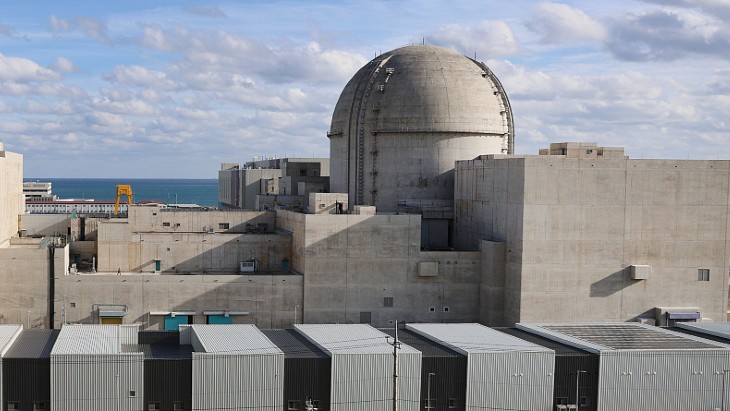The International Atomic Energy Agency (IAEA) has conducted a seismic review of the Atmea 1 reactor design. This is the first such review it has carried out on a new nuclear power reactor design.
 |
| A cutaway of a nuclear power plant based on the Atmea 1 reactor (Image: Atmea) |
At the request of Atmea - a joint venture between France's Areva and Japan's Mitsubishi Heavy Industries (MHI) - the IAEA sent a five-member Site External Events and Design (SEED) review mission to Kobe, Japan. The team assessed the technical methodologies used in the seismic design of the Atmea 1 reactor against IAEA Safety Standards.
The Atmea joint venture was established by Areva and MHI in September 2007 to develop, market, license and sell the Atmea 1 reactor design: an 1100 MWe pressurized water reactor combining technologies of both companies. Turkey's second nuclear power plant, at Sinop on its Black Sea coast, is proposed to feature four Atmea 1 reactors.
The team concluded the seismic design methodologies used for the reactor are "aligned" with relevant IAEA Safety Standards.
Greg Rzentkowski, direct of the IAEA's nuclear installations safety division, said: "The Atmea 1 reactor incorporates many proven technical approaches and methodologies to establish a seismically robust reactor design."
The IAEA's SEED review service is designed to assist the member states through the different stages of the site selection, site assessment and design of structures, systems and components against the site specific external and internal hazards. Upon request from a member state, the SEED review service provides an independent review of the site evaluation and the designed safety of the nuclear installation against the demands of the external hazards both natural and human induced and internal hazards.
Previous IAEA seismic safety reviews have focused on the early stages of nuclear power projects. "This is the first peer review focusing specifically on seismic safety for a new reactor design," Rzentkowski noted. "This type of review may be beneficial for the IAEA member states, including countries embarking on nuclear power programs, in achieving high-level of seismic safety."
Researched and written
by World Nuclear News




_72306.jpg)


_49562.jpg)





